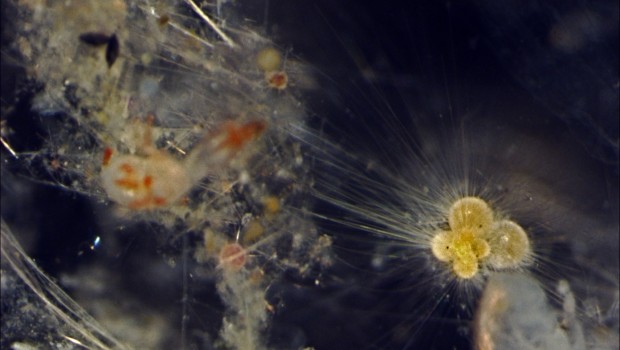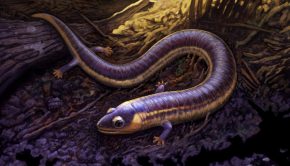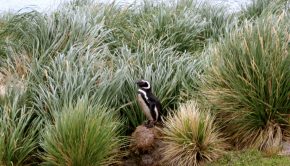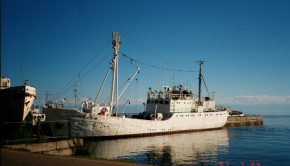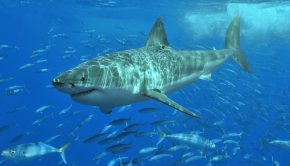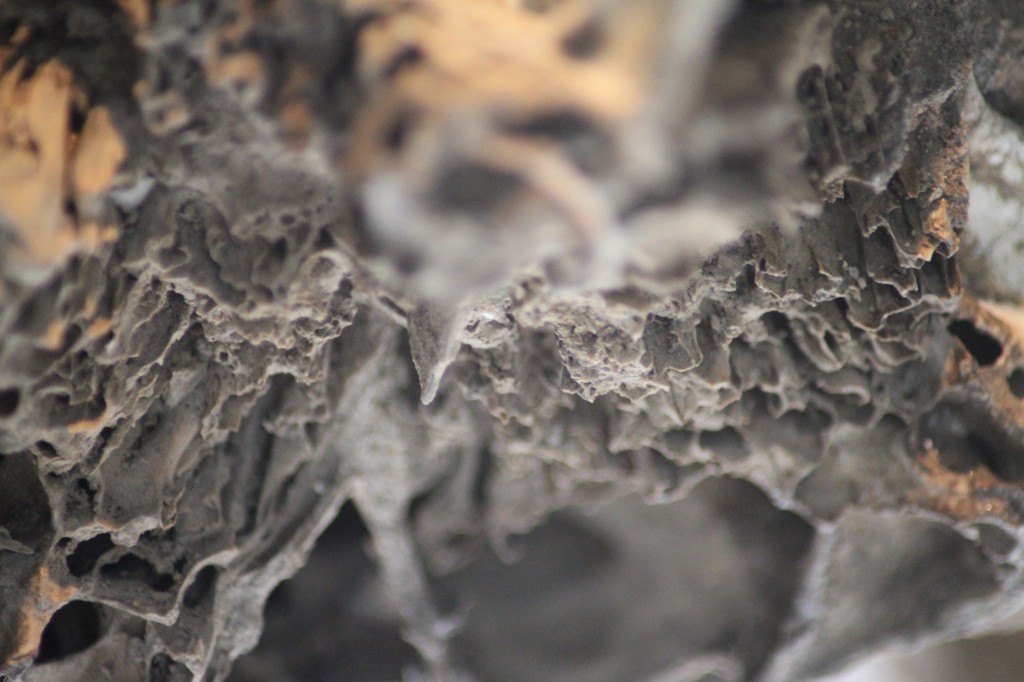Episode 34: Foraminifera and Palaeoclimatology
Planktonic foraminifera are single celled organisms that are highly abundant in modern oceans and a hugely important part of the Earth’s carbon cycle. Each cell builds a hard calcite ‘test’ around itself in a huge variety of shapes. These tests continuously rain down on to the ocean floor leaving continuous records of how these organisms have changed over millions of years. They form the most complete fossil record we have, and are a very useful tool in everything from the oil industry to understanding how evolution works.
In this episode we talk to Dr Tracy Aze from the University of Leeds about her research using planktonic forams to understand macroevolutionary change, as well as decoding their record to map major climate events and temperatures throughout geological history.
Part A
Podcast: Download (Duration: 31:51 — 29.2MB)
Part B
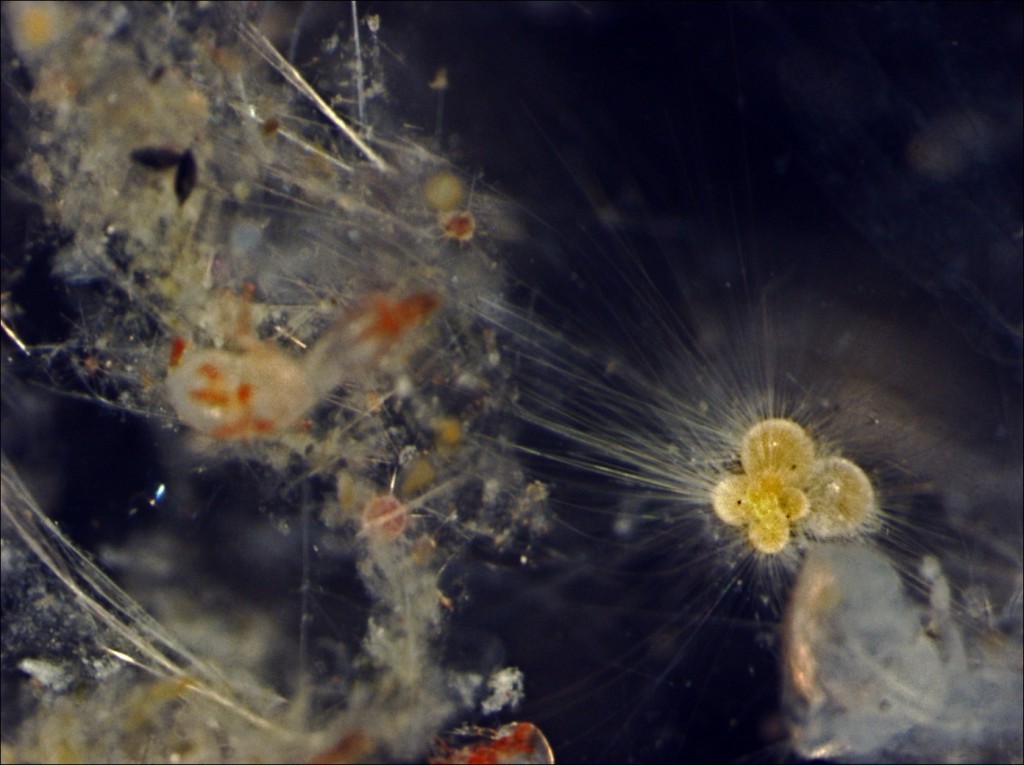
A living planktonic foraminifera showing the strands of ectoplasm coming out through the hard test to form the pseudopodial net.
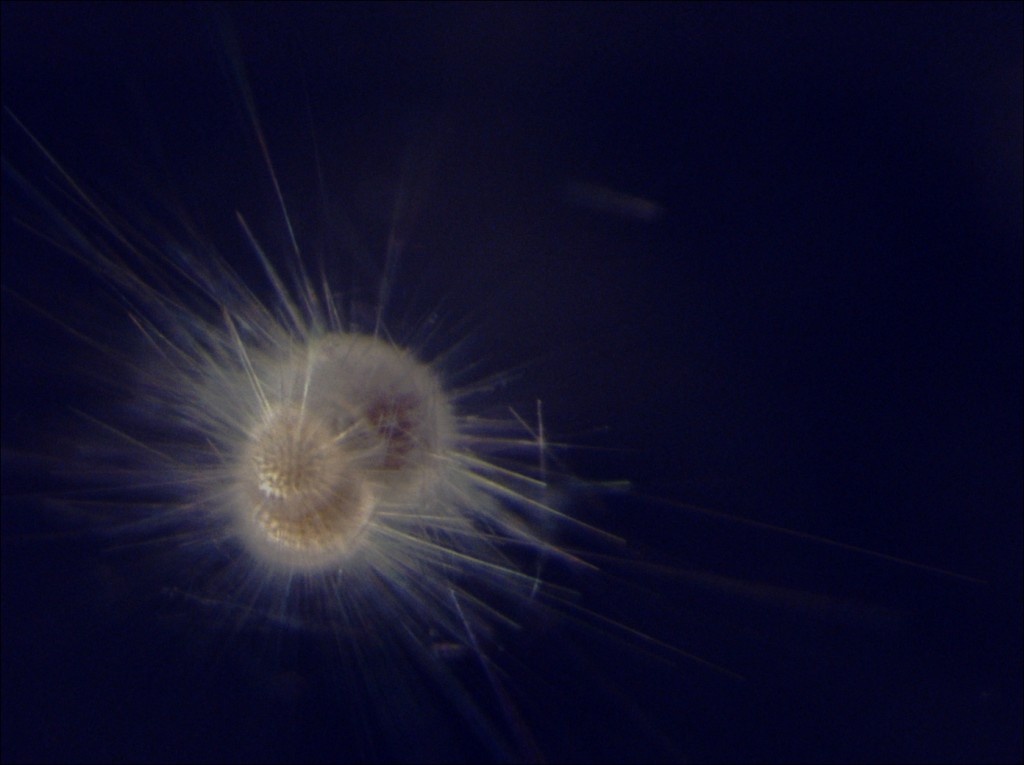
Another living foram showing the test and pseudopodial net, this species is Globigerinoides trilobus and we also find it in the fossil record.
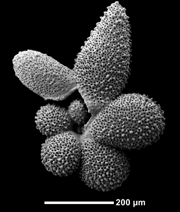
A fossil foram test of the species Globigerinella adamsi, this image was taken using a scanning electron microscope (SEM).
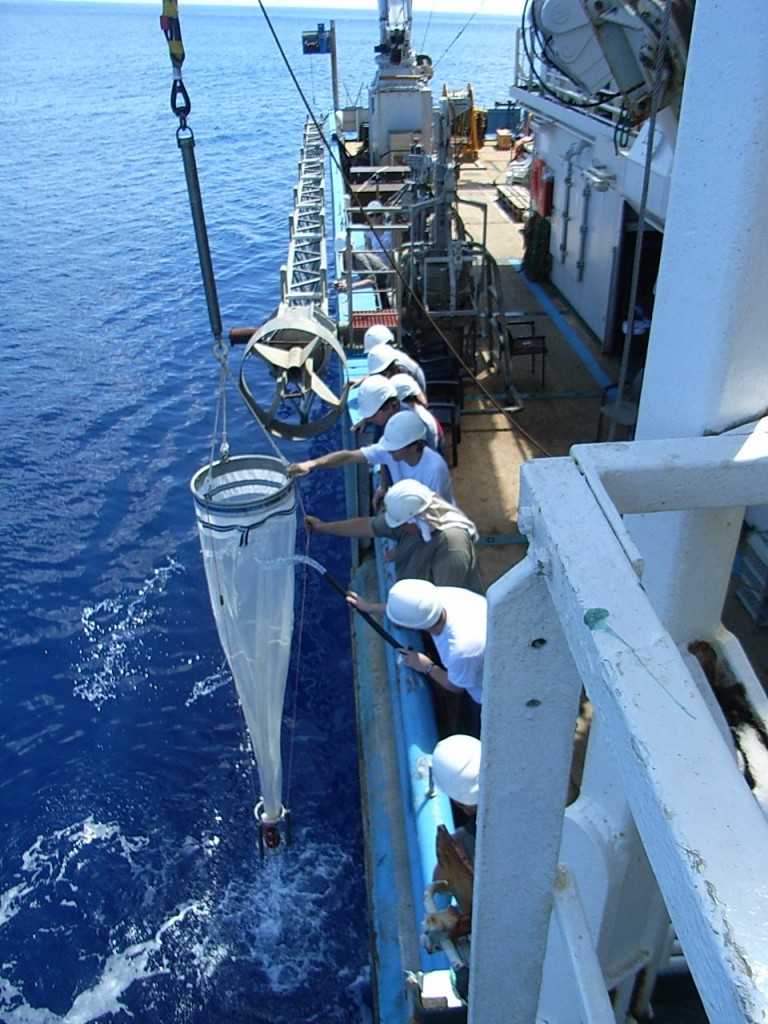
The team retrieve a plankton net whilst on a cruise. These are used for collecting living forams from the water column for study in the lab.
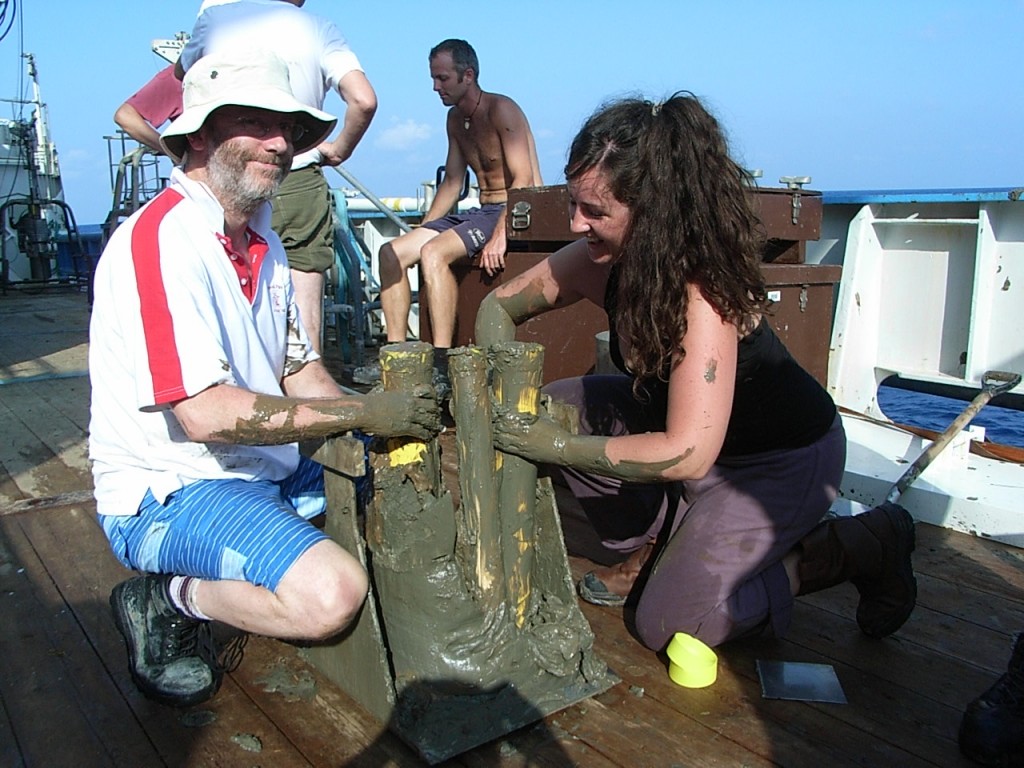
Tracy getting muddy working on an ocean drilling project cruise ship getting cores of ocean sediments
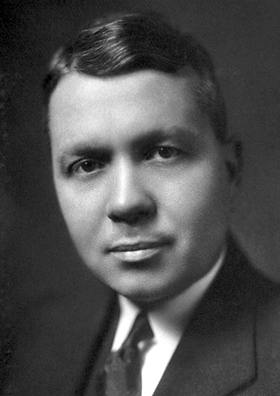
Harold Urey, a pioneering scientist who was very influential in the development of using isotope ratios to understand changes in ocean chemistry. He showed that the fractionation of oxygen isotopes depends on the temperature at which it occurs.

